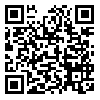Volume 2, Issue 2 (2014)
CLRJ 2014, 2(2): 243-270 |
Back to browse issues page
Download citation:
BibTeX | RIS | EndNote | Medlars | ProCite | Reference Manager | RefWorks
Send citation to:



BibTeX | RIS | EndNote | Medlars | ProCite | Reference Manager | RefWorks
Send citation to:
Houshangi M, Ghobadi H, Fooladvand H. A Comparative Review of the Allegorical Roles of Lion, Camel and Child in the Thoughts and Works of Rumi and Nietzsche. CLRJ 2014; 2 (2) :243-270
URL: http://clrj.modares.ac.ir/article-12-612-en.html
URL: http://clrj.modares.ac.ir/article-12-612-en.html
1- Ph.D. of Persian Language and Literature, Tarbiat Modares University, Tehran, Iran
2- Professor of Persian Language and Literature, Tarbiat Modares University, Tehran, Iran
3- Professor of Philosophy, Allameh Tabatabai University, Tehran, Iran
2- Professor of Persian Language and Literature, Tarbiat Modares University, Tehran, Iran
3- Professor of Philosophy, Allameh Tabatabai University, Tehran, Iran
Abstract: (6969 Views)
An important subject in the field of linguistics is the impact of one thought system on the community of lingual symbols. The relationship between mind and language conventions has long been of interest to linguists. The importance of this relationship becomes more prominent in comparative approaches where, through comparative study and analysis of the main schemas of the ideas of several thinkers or artists, the researcher traces the consistent and common use of linguistic symbols.
In the hermeneutic analysis of the works of Mowlana Jalal ad-Din Mohammad Rumi, the interpretation of symbols, analogy and codes governing his mind and language is a major research interest. One of the most important branches among these researches concerns the kinship of Mowlana’s language codes with other thinkers and artists.
On the other hand, Nietzsche, as a transcendental thinker, tries to use a symbolic language in explaining his thinking system. Due to his familiarity with the culture and literature of the East and the essential sameness of some of his principles with Mowlana’s transcendental approaches about the existence, morality, art , etc., Nietzsche achieves a set of symbols common with Rumi, which forms a shared language between the two thinkers.
Article Type: Research Paper |
Subject:
-
Received: 2013/09/24 | Accepted: 2014/02/26 | Published: 2014/09/23
Received: 2013/09/24 | Accepted: 2014/02/26 | Published: 2014/09/23
| Rights and permissions | |
 |
This work is licensed under a Creative Commons Attribution-NonCommercial 4.0 International License. |








